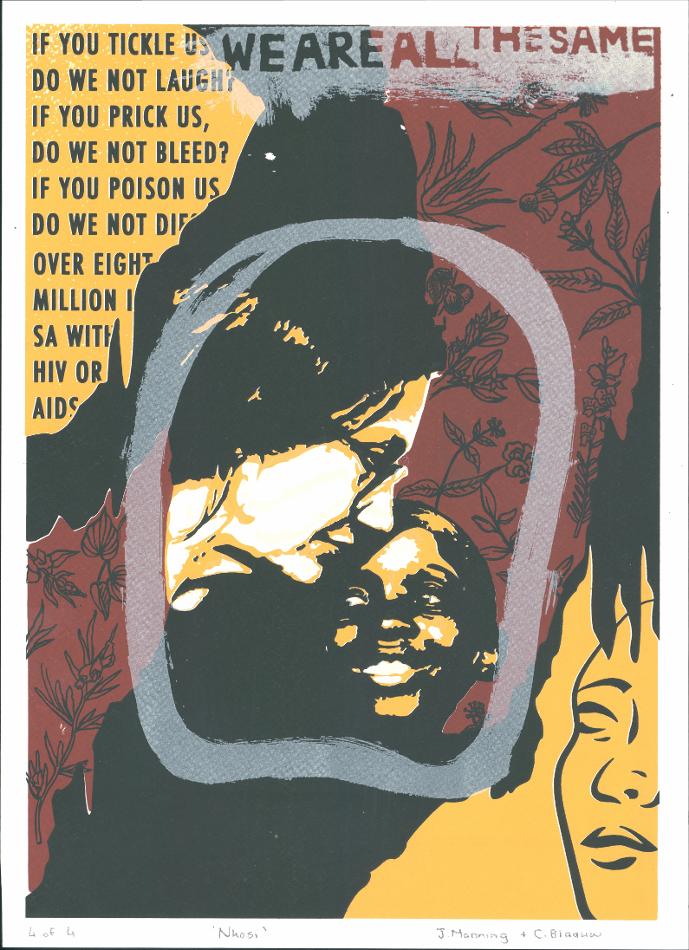Nkosi

View/
Date
2018Author
Blaauw, Christiaan N.
Manning, Jenna
Date Created
2018Format Extent
1 artworkRights
This item is subject to copyright protection. Reproduction of the content, or any part of it, other than for research, academic or non-commercial use is prohibited without prior consent from the copyright holder.Copyright Stellenbosch University
Metadata
Show full item recordAbstract
Description of Artwork
South Africa’s famous child Aids activist, Nkosi Johnson, was born with HIV and died at the age of 12 in 2001. At the time of his death, he was the longest-surviving child born with HIV in the country.
One of Nkosi’s major accomplishments as an activist was to reshape public opinion regarding the disease, since the stigma surrounding HIV/Aids meant that was only spoken of in pejorative euphemisms, such as ‘the whores’ disease’. One of the obstacles Nkosi faced as an individual living with Aids was discrimination when applying for school. When his foster mother, Gail, was filling out his application forms, one of the questions asked whether the child suffered from anything. She said Aids. Later the school had a board meeting where they decided that he would not be accepted. This was not the only event in his life where he suffered due to discrimination – his mother, Daphne, had lost both her job and place to live because of her HIV status.
He was posthumously awarded the first Kids Rights Foundation’s International Children’s Peace Prize in
Rome in November 2001 for his efforts in support of the rights of children with HIV/Aids, and his legacy continues through Nkosi’s Haven, which houses and supports HIV-positive mothers and children.
Nkosi rose to international prominence in July 2000 when he delivered his self-written address, televised worldwide, to 10 000 delegates at the 13th International Aids Conference in Durban. “Care for us and accept us – we are all human beings,” he said at the conclusion of his speech, “we are normal. We have hands. We have feet. We can walk, we can talk, and we have needs just like everyone else. Don’t be afraid of us – we are all the same.
Collections
Related items
Showing items related by title, author, creator and subject.
-
Rolong homestead, after Casalis
Walton, James, 1911-1999Drawing depicting a Rolong homestead, after Casalis. -
Puntjie and Heidelberg, kapstylhuise
Walton, James, 1911-1999Photographs and drawing depicting kapstylhuise at Puntjie and Heidelberg, Cape Town. -
Ndebele vernacular architecture
Bowen, R. E. Cole (Robert Edward Cole)Photographs depicting Ndebele vernacular architecture.



